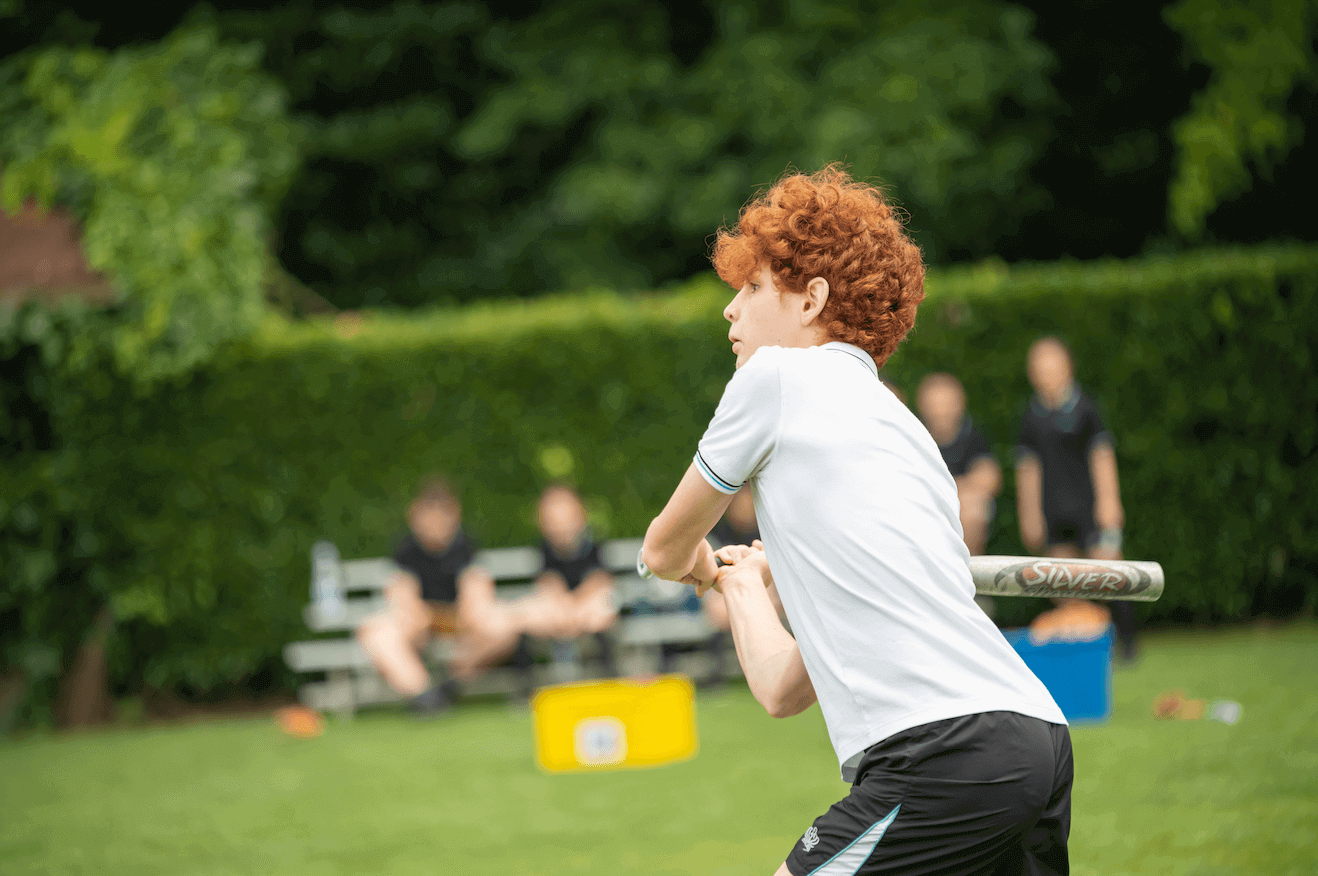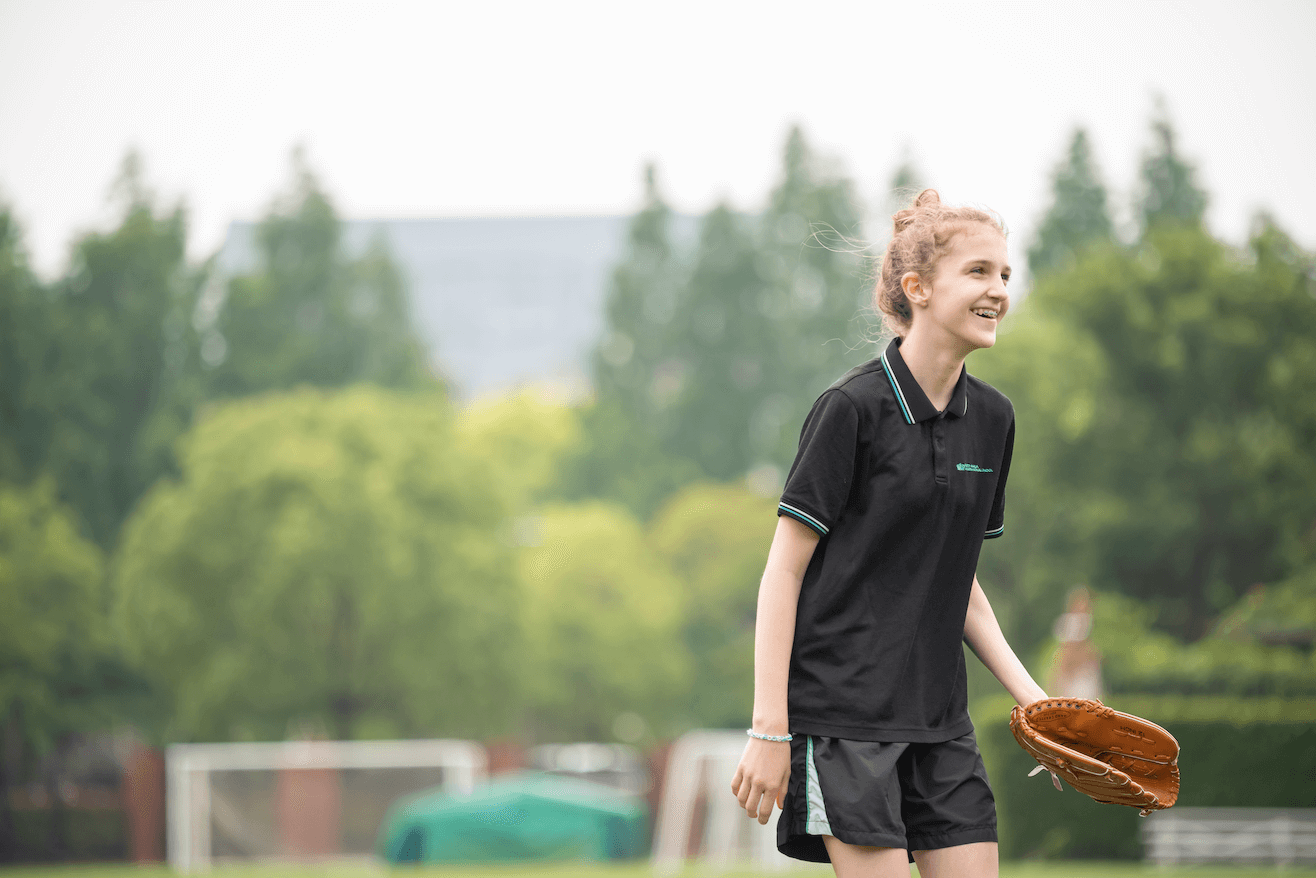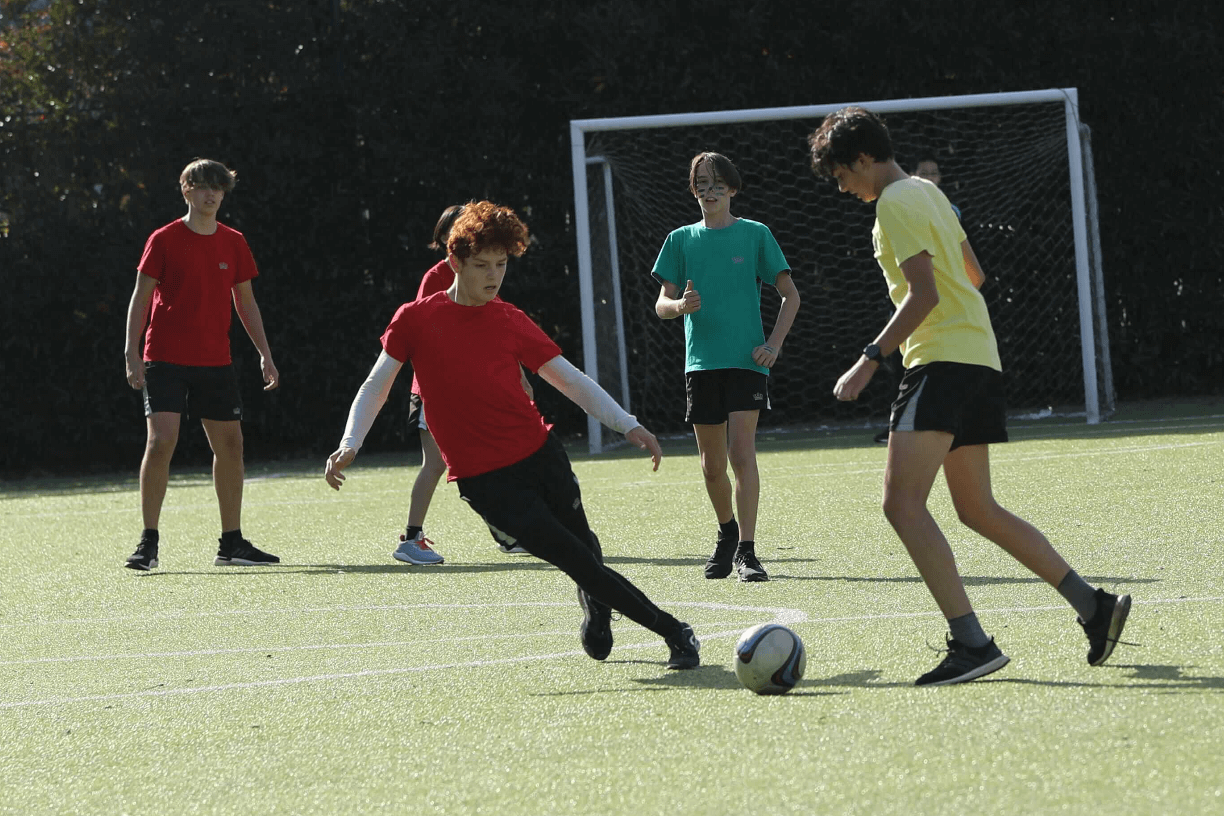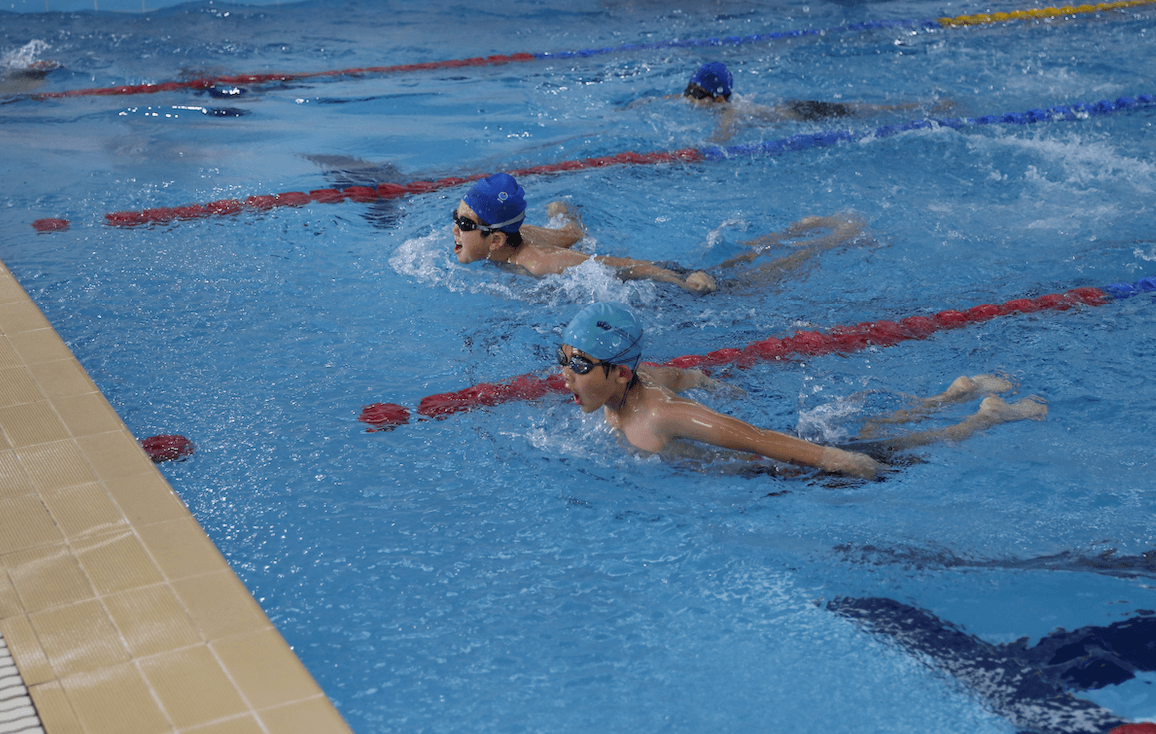At NAIS Pudong, our students have the opportunity to participate in a wide range of fun sports activities and associations, including t-ball. T-ball is quite similar to baseball but with simplified rules. It is often used to introduce children to the game, helping them to develop hand/eye coordination as well as sportsmanship and teamwork skills.
To find out more about the range of other sports available at NAIS Pudong, please visit our Sports Activities page or contact us to speak to a member of our Admissions team for more information. Here are some of the t-ball rules and regulations that we follow in our games at NAIS Pudong.
Official rules and regulations for FOBISIA t-ball
- 10 batters – boys/girls must bat alternately.
- 10 fielders each inning.2 innings games
General Information
- Schools will have an allocated area for their competitors.
- Each school needs to ensure they have adequate supervision for their teams.
- Host school will have photographers for the event.
- These photos will be made available to all teams at the conclusion of the Games.
- All teams, parents, spectators, team members and team officials should follow the FOBISIA Code of Conduct at all times.
- The will be some spectator areas for parents viewing of matches.
Equipment
- 28” bat: Year 5 and Year 6
- A 9” soft impact bal
- First base ( half orange half white )
Field specifications
- Runners will have a 4.5 meter commitment line between 3rd base and home line/scoring line. Once the commitment line is crossed, players must continue to the home line.
- There will be a 45m boundary line from the batting tee for Year 5 and Year 6 games.
- Bunt line will be 4.5 meters from the tee.
- All bases are placed in line with the inside corners of the diamond.
- 1st base will be a double-sized base, half orange & half white. The white section is placed in the normal 1st base position; the orange section is outside the diamond. When batter is running to 1st base he/she has to run straight to the orange section and tag that to be safe. If there is no play on 1st and the batter is continuing the run to 2nd base, he/she can make a curved run that only contacts the white section. The fielder tags the white section as on all other bases.
Batting
- If a team does not have a full team both coaches may agree to bat lower numbers. If no agreement is reached, the team with fewer players must play with a disadvantage.
- A batter throwing the bat in a dangerous manner shall be called out. “Dead ball” called - runners return to bases.
- Last batter shall wear a bib.
- Once stationary ‘fielders hold and play ball’ will be called. Players will have approximately 5 seconds in which to swing. Failure to swing after ‘play ball’ time allowance will result in a ‘strike’.
- Players back foot should be stationary at the start of their swing. However, please note that players can pivot their back foot as they transfer weight in the swing.
- Batter must be seen to make a full back swing and follow through or ‘strike’ will be called.
- Players who have started to swing cannot stop and restart and cannot change the direction of their hit by moving the front foot or ‘strike’ will be called.
- Hitting a foul ball on the 3rd attempt is considered out.
- If the batter hits the ball on the full over the boundary line the batter and everyone on base will make a home run. If the hit bounces before going over the boundary line, the umpire will stop play by raising both arms in the air. The batter automatically walks the first two bases. All other runners on bases will move forward accordingly.
- If the batted ball is caught on the full (i.e. before it bounces), the batter is out and all other runners have to return to their original base. During this time they can be tagged or forced out.
- When running between bases, the runner may not deviate off the line between bases in order to avoid a tag. If the runner does so, they will be deemed ‘out’.
- Obstruction will also be called if runners deliberately stop fielders from fielding the ball. In this instance the runner will be out. The umpire will make the call in this situation.
- Runners must remain on base until the ball (or tee) is hit or until the bat passes the plane of the ball. Penalty – first offence return to base, second offence – “Out”. Even if runners are stationary, but off the base, they will be called out.
Fielding
- There will be 10 fielders taking the field.
- Only one fielder should be inside the diamond before ball is hit. This player must make contact with the centre mark until the ball is hit from the tee or bat swings over the ball.
- Fielders should not stand with their feet in contact with the base if not making an effort to catch a ball or this will be deemed as obstructing an oncoming runner.
- A ball ‘caught’ in foul ball territory will be ‘Out’.
- Fielder may use any part of their body to tag any base while in control of the ball. This base will then be deemed tagged/out.
- Home base for the purpose of tagging the base will be the tee. Any part of the tee may be tagged by any part of the fielder in control of the ball. Should the tee fall over during play, then the fielder should make contact with the tee where it lies.
- If fielders throw a ball over the dead ball lines then all runners that are standing on base at the point that the ball crosses the dead ball line advance one. If runners are running in between bases they get the base they are running to plus 1.
- Runners may be tagged out by a fielder with the ball by the ball being held by the fielder or the hand holding the ball. Tagging may occur between any base apart from after the commitment line going home.
- Obstruction will be called if a fielder deliberately obstructs a runner and is not in the process of fielding the ball. Runner will be allowed to the base they were running too, plus an additional one (if this results in other runners being forced to move bases, they will do so safely also).
- Game stops when the ball is returned back to the tee or the umpire has called ‘time’.
- Umpires can use a whistle and then call ‘time’ if preferred.
- One 3 minute time out is allowed by a team per innings.
Coaches
- One coach per coaching box is allowed, batting or fielding sides.
Scorers
The scorers will sit behind the home plate and outside the dead ball lines, and must notify the umpire when:
- a batter bats or is about to bat out of order. The coach will submit the batting order to the scoring table before the start of the 1st innings of each game played.
- the scorer shall notify the umpire and coaches when the 10 batter is approaching the plate.
Scoring
To determine the overall positions the points allocated will be:
Win – 4 points, Draw – 2 points, Defeat – 1 point
In the occurrence of a tie in the round robin the following will be used to decide the positions:
- Head to head result
- Run difference
- Runs Scored
- 1 inning game played using 3 outs rule.
Playing Equipment
Bats will be provided or schools may use their own within the size regulations but these must also be available to the other team too. Football boots or suitable sports shoes - no metal studs may be worn please.
Some Basic Guidelines for Spectators
Tee Ball it is a game intended to safely and progressively introduce young students to softball/baseball. The basic outline is as follows:
- Players have 3 attempts to hit the ball off the Tee and into the field of play (within the vector and past the 4.5M “bunt line”);
- They must then run round the bases without the fielding team getting them out;
- Runners on bases may not leave the base until the batter has struck at the ball;
- Batters and runners can be out in 4 ways
- “Struck out” ie did not hit the ball off the Tee in 3 attempts;
- Caught out;
- Thrown out at a base (ie the ball gets to the base before they do);
- “Tagged” out (a defensive player touching them with the ball or the hand that is holding the ball
An important concept to understand is that a batter-runner may turn back and run to the base they have just left. This means that unless a player has to run to the next base (is “forced” to do so because there is no option), the only way to get them out is to tag them. However, if a player is “forced” to run the fielders only need to get the ball to the base they were running to in order to get the batter-runner out.
All plays at 1st are forced, all plays at Home are “forced”. Plays at 2nd and 3rd may be “forced” or “tagged” depending on whether the runner can go back to the base he/she has just left.
The last, and maybe the most difficult rule, is that if a ball is hit up in the air (a fly-ball), any runners on bases should not leave their bases until after it is caught. If they do and the ball is caught, they must return to their base before running on, and in so doing, risk being tagged or forced out. This rule applies to a fly ball in the fair play area, including the diamond. If a runner over-runs the base being returned to, he/she can also be tagged while not in contact with the base. A runner who leaves 3rd base on a flyball, and has crossed the commitment line when the ball is caught, is out! (This is to stop players hitting the ball way up in the air to allow their team to run.)
Please also note the ball remains live on the last batter wherever it ends up so if it does end up under your chair please move aside and allow the fielding team to retrieve it!
Tee Ball is a game that can get very exciting and is especially tricky as the rules can be complex. As spectators please do cheer on your teams but do remember that the game is more than winning so help the students to grow into good sportsmen and women by taking the umpires decisions as they stand whether you believe them to be correct or not.






.jpg?rev=-1&hash=4B1ADA74AB0E829CB2ECEE6BEF89D006)